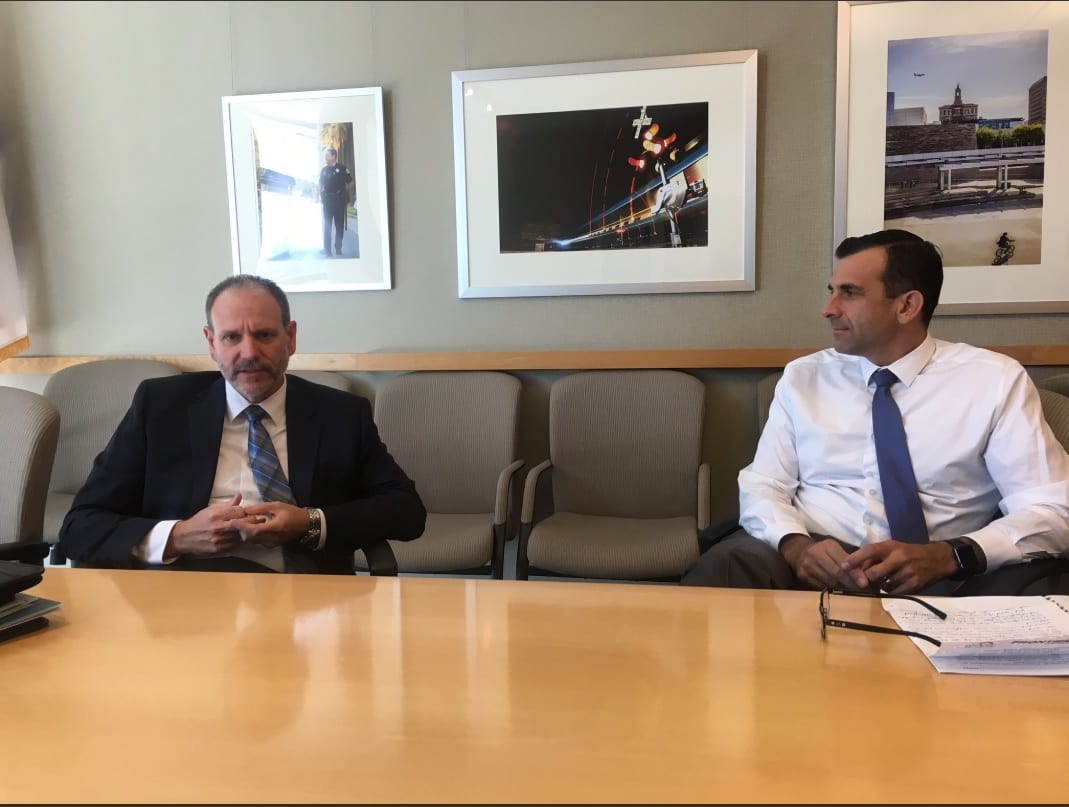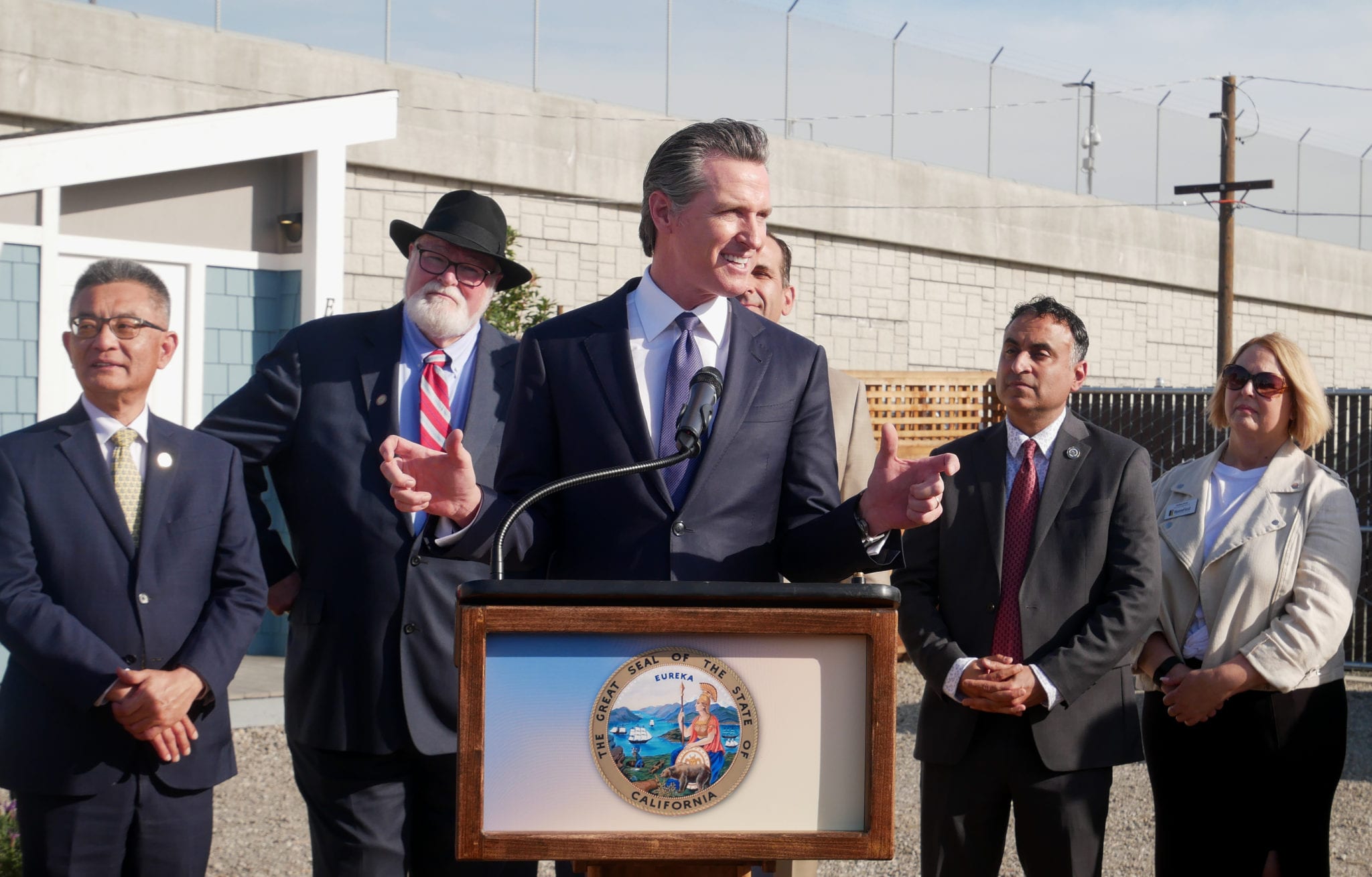Governments from Sacramento to San Jose City Hall are facing historic budget deficits caused by the COVID-19 pandemic, often having to solve these crises in virtual meetings as the region nears its eighth week in quarantine.
“We are at a time that’s simply unprecedented,” Gov. Gavin Newsom said Thursday in announcing his revised budget proposal aimed to balance the state’s $54.3 billion deficit, likening it to the Great Depression.
South Bay cities have already been bracing for budget cuts and layoffs after coronavirus, as San José Spotlight reported.
San Jose faces a $71.6 million deficit due to revenue declines worse than the Great Recession and Dotcom Bust, according to City Manager Dave Sykes. General fund dollars are expected to drop nine percent compared to the 2018-2019 year due to the pandemic that’s largely shuttered government services, stalled construction projects and closed tens of thousands of restaurants, retailers and small businesses — taking a major bite out of the city’s tax revenue.
“The recommendations included in this document take serious steps to address what we know will be a substantially weaker economic environment for the foreseeable future, while still mindful that much of the long-term impact from the pandemic is uncertain,” Sykes wrote in the budget proposal Tuesday.


In addressing the deficit, the city’s $4.1 billion proposed budget closes the shortfall through cuts to library hours, parks and community centers, community service officer staffing, police hiring, airport costs and City Hall jobs, among other concessions. Additionally, the city will need to dip into reserves and other one-time dollars.
Officials propose slashing 103 positions, however, no employee layoffs are anticipated yet because of the city’s high job vacancy rate, while some temporary positions expire on June 30 as planned. More than 1,000 employees are expected to be furloughed, according to city leaders.
City officials also announced a contingency plan if city revenues continue to decline even further by slashing $12 million across city departments, which includes 75 jobs. Contingencies would be brought forward in early fall for City Council consideration.
On top of a $10 million deficit for the remainder of the fiscal year, the city of Santa Clara could see a $23 million decrease in funds, as sales, property and hotel taxes have dropped. The city is exploring cuts to parks and recreation programing and library hours, among other areas.
“Not only are we responding to a public health emergency, but we are also responding to an economic crisis that’s affecting nearly everyone in our community,” said Santa Clara City Manager Deanna Santana. “Our approach is now changing from a growth strategy to one that is focused on retaining public service levels.”
At the Santa Clara County Board of Supervisors chambers, conditions are equally bad as officials grapple with patching up shortfalls in the county’s $8.1 billion budget. The general fund alone has a $246 million deficit with additional one-time costs, County Executive Jeff Smith told supervisors Tuesday.
“We have an enormous problem,” Smith said. “I don’t think we’ve ever had that big a deficit in the history of the county.”
He added it will be difficult to cut $250 million to $300 million of ongoing costs without a “crash landing.”


Significant cuts projected in Sacramento
Newsom on Thursday said state revenues have declined 22.3% since January, when the state had a projected $5.6 billion surplus. By July, the Legislature and Newsom must pass a balanced budget or not get paid.
“We are not arguing to solve a $54.3 billion-dollar shortfall overnight,” Newsom said. “We are looking not only at the current fiscal year and next year’s budget year, but we’re looking at a multiyear strategy to work through this budget deficit.”
In his $203 billion budget, the governor proposed using $8.8 billion in reserves, which includes dispersing the $16 billion rainy day fund over three years.
Withdrawing new proposals and cutting spending increases by $8.4 billion, Newsom scrapped reform of Medi-Cal, the state’s Medicaid program and expanding health insurance to undocumented seniors. However, overall funding for Medi-Cal is bolstered with expected COVID-19 case increases. His budget also seeks borrowing $10.4 billion, raising $4.4 billion through new revenues with temporary limits on tax credits and using $8.3 billion in federal coronavirus relief.
Newsom also outlined $14 billion in government cuts. Spending on education is slashed by $7 billion, though the governor plans to distribute $4.4 billion in federal coronavirus relief to schools.
Newsom also called for a 10% cut to government workers’ pay — amounting to $2.8 billion in savings — and reducing physical office hours in lieu of telework. If an agreement isn’t reached, he said, the state might furlough workers.
“We can call the bargaining team together, and we can figure out the equivalent of what that 10% represents and try to negotiate something,” said Yvonne Walker, president of the SEIU Local 1000, which represents government workers, in a video Wednesday. “Yeah, there might be a little pain involved, but it won’t be the same two furlough days and how you think about it.”
However much is slashed, Newsom said his budget rescinds pay cuts if Congress passes House Democrats’ $3 trillion coronavirus relief bill announced Tuesday, which has $1 trillion directed to state and local governments.
“The state of California, as large as we are — the nation’s fifth largest economy… we simply cannot do all that is needed at this moment,” Newsom said. “We need the federal government.”
Contact Eduardo Cuevas at [email protected] or follow @eduardomcuevas on Twitter.



Leave a Reply
You must be logged in to post a comment.